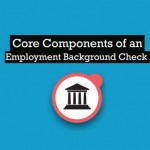On occasion, employers must make the difficult decision to withdraw a job offer or terminate employment based on the results of a background check report. As a best practice and to fully comply with local, state and federal laws, the following steps are recommended.
Making an Adverse Employment Decision
Determine whether the criminal record or discrepancy in the background screening report will present an unacceptable business risk or impact the person’s ability to meet the expectations of the job. Consider the relevancy of the crime to the job requirements, for instance a “driving while intoxicated” violation may have no impact on an office job where driving is not required. Review the severity of the crime, such as misdemeanor versus felony and; the time that has passed since the crime was committed (e.g.,1 versus 15 years ago).
Individualized Assessment
Once a decision has been made to withdraw the job offer or terminate employment, it is best to contact the person as quickly as possible. Let them know the results of the background screening report, and give them the opportunity to explain any perceived discrepancy. If there is evidence that there is erroneous data in the report or other mitigating circumstances, tell them you will re-evaluate the data. If the report is accurate, state that you will be withdrawing the offer or terminating their employment.
Pre-Adverse Action Notice
Let the person know that you will be sending them a pre-adverse action letter. This will give them the opportunity to contact First Contact HR directly if they believe the background screening report is incorrect. This letter will also provide them with a copy of the background screening report, and a summary of their rights under the Fair Credit Reporting Act.
Adverse Action Letter
After waiting seven (7) days, you should send an adverse action letter, which confirms that you made the final decision to either withdraw the job offer or terminate employment.
Changes in Law
Generating pre-adverse and adverse action letters are generally easy and straight-forward. Many organizations utilize a template or an automated process for inserting the subject data into the letters. However, recent changes in laws for some jurisdictions require that for pre-adverse and adverse action notices an employer provide specific information relating to the reasons they are making an employment decision or other documents or information be provided. In these cases, employers will need to customize the letters for each subject in the following jurisdictions to ensure compliance with local laws: CA, MA, NJ, Seattle (WA), Montgomery and Prince George’s Counties (MD), Philadelphia (PA), Portland (OR), Austin (TX), Chicago (IL) and New York City (NY).














